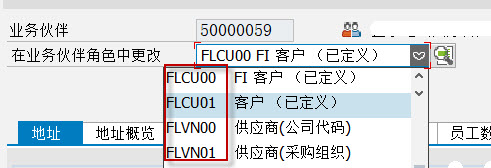Linux Platform Device and Driver
| Linux Platform Device and Driver | |
| 来源: ChinaUnix博客 日期: 2008.06.27 19:54 (共有0条评论) 我要评论 | |
| Linux Platform Device and Driver 作者:Dongas 日期:08-06-27 从Linux 2.6起引入了一套新的驱动管理和注册机制:Platform_device和Platform_driver。 Linux中大部分的设备驱动,都可以使用这套机制, 设备用Platform_device表示,驱动用Platform_driver进行注册。 Linux platform driver机制和传统的device driver 机制(通过driver_register函数进行注册)相比,一个十分明显的优势在于platform机制将设备本身的资源注册进内核,由内核统一管理,在驱动程序中使用这些资源时通过platform device提供的标准接口进行申请并使用。这样提高了驱动和资源管理的独立性,并且拥有较好的可移植性和安全性(这些标准接口是安全的)。 Platform机制的本身使用并不复杂,由两部分组成:platform_device和platfrom_driver。 通过Platform机制开发发底层驱动的大致流程为: 定义 platform_device à 注册 platform_device à 定义 platform_driver à注册 platform_driver。 首先要确认的就是设备的资源信息,例如设备的地址,中断号等。 在2.6内核中platform设备用结构体platform_device来描述,该结构体定义在kernel/include/linux/platform_device.h中, struct platform_device { const char name; u32 id; struct device dev; u32 num_resources; struct resource resource; }; 该结构一个重要的元素是resource,该元素存入了最为重要的设备资源信息,定义在kernel/include/linux/ioport.h中, struct resource { const char name; unsigned long start, end; unsigned long flags; struct resource parent, sibling, child; }; 下面举s3c2410平台的i2c驱动作为例子来说明: / arch/arm/mach-s3c2410/devs.c / / I2C / static struct resource s3c_i2c_resource[] = { [0] = { .start = S3C24XX_PA_IIC, .end = S3C24XX_PA_IIC + S3C24XX_SZ_IIC - 1, .flags = IORESOURCE_MEM, }, [1] = { .start = IRQ_IIC, //S3C2410_IRQ(27) .end = IRQ_IIC, .flags = IORESOURCE_IRQ, } }; 这里定义了两组resource,它描述了一个I2C设备的资源,第1组描述了这个I2C设备所占用的总线地址范围,IORESOURCE_MEM表示第1组描述的是内存类型的资源信息,第2组描述了这个I2C设备的中断号,IORESOURCE_IRQ表示第2组描述的是中断资源信息。设备驱动会根据flags来获取相应的资源信息。 有了resource信息,就可以定义platform_device了: struct platform_device s3c_device_i2c = { .name = “s3c2410-i2c”, .id = -1, .num_resources = ARRAY_SIZE(s3c_i2c_resource), .resource = s3c_i2c_resource, }; 定义好了platform_device结构体后就可以调用函数platform_add_devices向系统中添加该设备了,之后可以调用platform_device_register()进行设备注册。要注意的是,这里的platform_device设备的注册过程必须在相应设备驱动加载之前被调用,即执行platform_driver_register之前,原因是因为驱动注册时需要匹配内核中所以已注册的设备名。 s3c2410-i2c的platform_device是在系统启动时,在cpu.c里的s3c_arch_init()函数里进行注册的,这个函数申明为arch_initcall(s3c_arch_init);会在系统初始化阶段被调用。 arch_initcall的优先级高于module_init。所以会在Platform驱动注册之前调用。(详细参考include/linux/init.h) s3c_arch_init函数如下: / arch/arm/mach-3sc2410/cpu.c / static int __init s3c_arch_init(void) { int ret; …… / 这里board指针指向在mach-smdk2410.c里的定义的smdk2410_board,里面包含了预先定义的I2C Platform_device等. / if (board != NULL) { struct platform_device *ptr = board->devices; int i; for (i = 0; i board->devices_count; i++, ptr++) { ret = platform_device_register(ptr); //在这里进行注册 if (ret) { printk(KERN_ERR “s3c24xx: failed to add board device %s (%d) @%p/n”, (ptr)->name, ret, ptr); } } / mask any error, we may not need all these board devices / ret = 0; } return ret; } 同时被注册还有很多其他平台的platform_device,详细查看arch/arm/mach-s3c2410/mach-smdk2410.c里的smdk2410_devices结构体。 驱动程序需要实现结构体struct platform_driver,参考drivers/i2c/busses / device driver for platform bus bits / static struct platform_driver s3c2410_i2c_driver = { .probe = s3c24xx_i2c_probe, .remove = s3c24xx_i2c_remove, .resume = s3c24xx_i2c_resume, .driver = { .owner = THIS_MODULE, .name = “s3c2410-i2c”, }, }; 在驱动初始化函数中调用函数platform_driver_register()注册platform_driver,需要注意的是s3c_device_i2c结构中name元素和s3c2410_i2c_driver结构中driver.name必须是相同的,这样在platform_driver_register()注册时会对所有已注册的所有platform_device中的name和当前注册的platform_driver的driver.name进行比较,只有找到相同的名称的platfomr_device才能注册成功,当注册成功时会调用platform_driver结构元素probe函数指针,这里就是s3c24xx_i2c_probe,当进入probe函数后,需要获取设备的资源信息,常用获取资源的函数主要是: struct resource platform_get_resource(struct platform_device dev, unsigned int type, unsigned int num); 根据参数type所指定类型,例如IORESOURCE_MEM,来获取指定的资源。 struct int platform_get_irq(struct platform_device dev, unsigned int num); 获取资源中的中断号。 下面举s3c24xx_i2c_probe函数分析,看看这些接口是怎么用的。 前面已经讲了,s3c2410_i2c_driver注册成功后会调用s3c24xx_i2c_probe执行,下面看代码: / drivers/i2c/busses/i2c-s3c2410.c / static int s3c24xx_i2c_probe(struct platform_device pdev) { struct s3c24xx_i2c i2c = &s3c24xx_i2c; struct resource res; int ret; / find the clock and enable it / i2c->dev = &pdev->dev; i2c->clk = clk_get(&pdev->dev, “i2c”); if (IS_ERR(i2c->clk)) { dev_err(&pdev->dev, “cannot get clock/n”); ret = -ENOENT; goto out; } dev_dbg(&pdev->dev, “clock source %p/n”, i2c->clk); clk_enable(i2c->clk); / map the registers / res = platform_get_resource(pdev, IORESOURCE_MEM, 0); / 获取设备的IO资源地址 / if (res == NULL) { dev_err(&pdev->dev, “cannot find IO resource/n”); ret = -ENOENT; goto out; } i2c->ioarea = request_mem_region(res->start, (res->end-res->start)+1, pdev->name); / 申请这块IO Region / if (i2c->ioarea == NULL) { dev_err(&pdev->dev, “cannot request IO/n”); ret = -ENXIO; goto out; } i2c->regs = ioremap(res->start, (res->end-res->start)+1); / 映射至内核虚拟空间 / if (i2c->regs == NULL) { dev_err(&pdev->dev, “cannot map IO/n”); ret = -ENXIO; goto out; } dev_dbg(&pdev->dev, “registers %p (%p, %p)/n”, i2c->regs, i2c->ioarea, res); / setup info block for the i2c core / i2c->adap.algo_data = i2c; i2c->adap.dev.parent = &pdev->dev; / initialise the i2c controller / ret = s3c24xx_i2c_init(i2c); if (ret != 0) goto out; / find the IRQ for this unit (note, this relies on the init call to ensure no current IRQs pending / res = platform_get_resource(pdev, IORESOURCE_IRQ, 0); / 获取设备IRQ中断号 / if (res == NULL) { dev_err(&pdev->dev, “cannot find IRQ/n”); ret = -ENOENT; goto out; } ret = request_irq(res->start, s3c24xx_i2c_irq, IRQF_DISABLED, / 申请IRQ */ pdev->name, i2c); …… return ret; } 小思考: 那什么情况可以使用platform driver机制编写驱动呢? 我的理解是只要和内核本身运行依赖性不大的外围设备(换句话说只要不在内核运行所需的一个最小系统之内的设备),相对独立的,拥有各自独自的资源(addresses and IRQs),都可以用platform_driver实现。如:lcd,usb,uart等,都可以用platfrom_driver写,而timer,irq等最小系统之内的设备则最好不用platfrom_driver机制,实际上内核实现也是这样的。 参考资料: linux-2.6.24/Documentation/driver-model/platform.txt 《platform _device和platform_driver注册过程》 http://blog.chinaunix.net/u2/60011/showart.php?id=1018999 http://www.eetop.cn/blog/html/45/11145-676.html [url=http://blog.chinaunix.net/u2/60011/showart.php?id=1018999][/url] |



































还没有评论,来说两句吧...